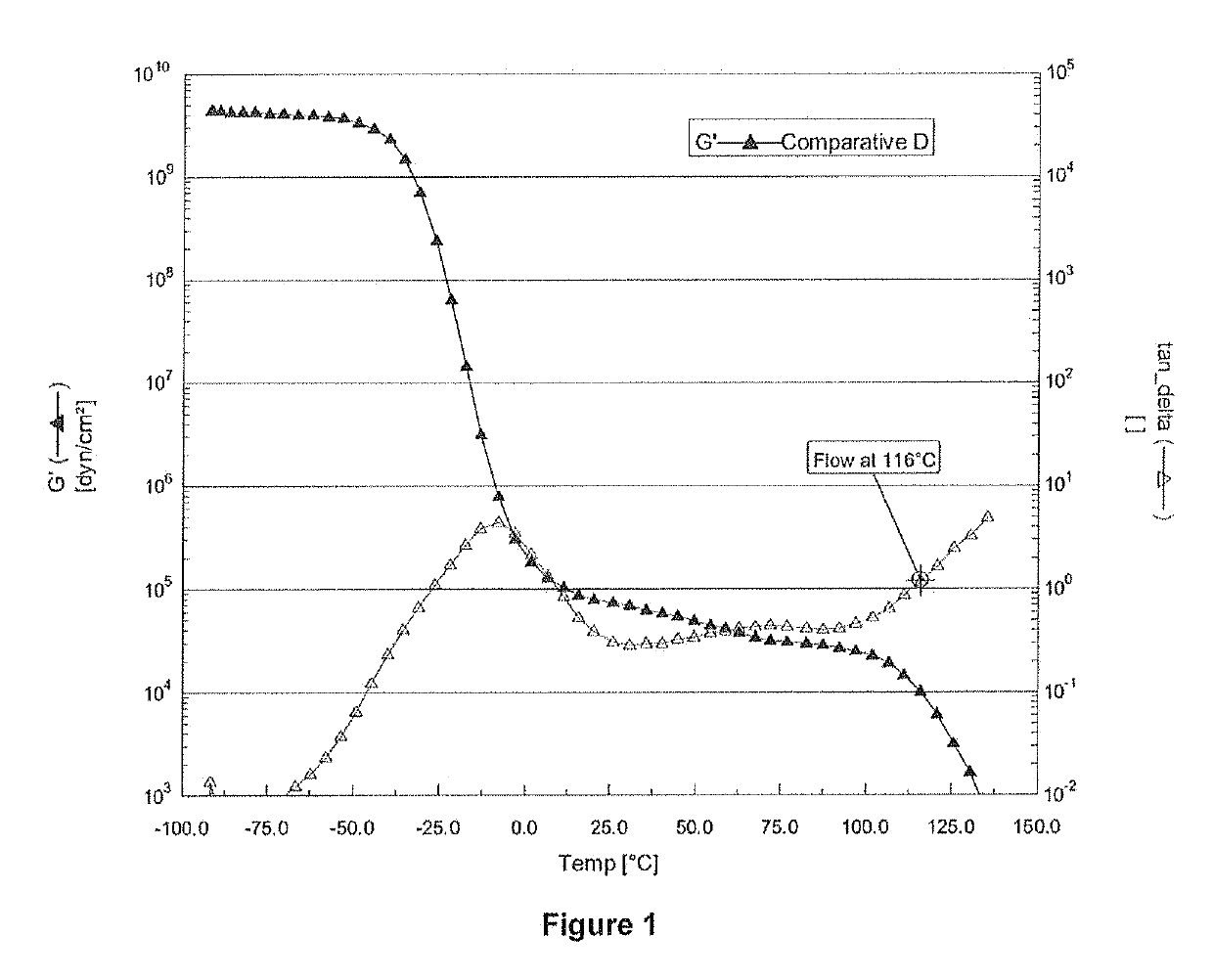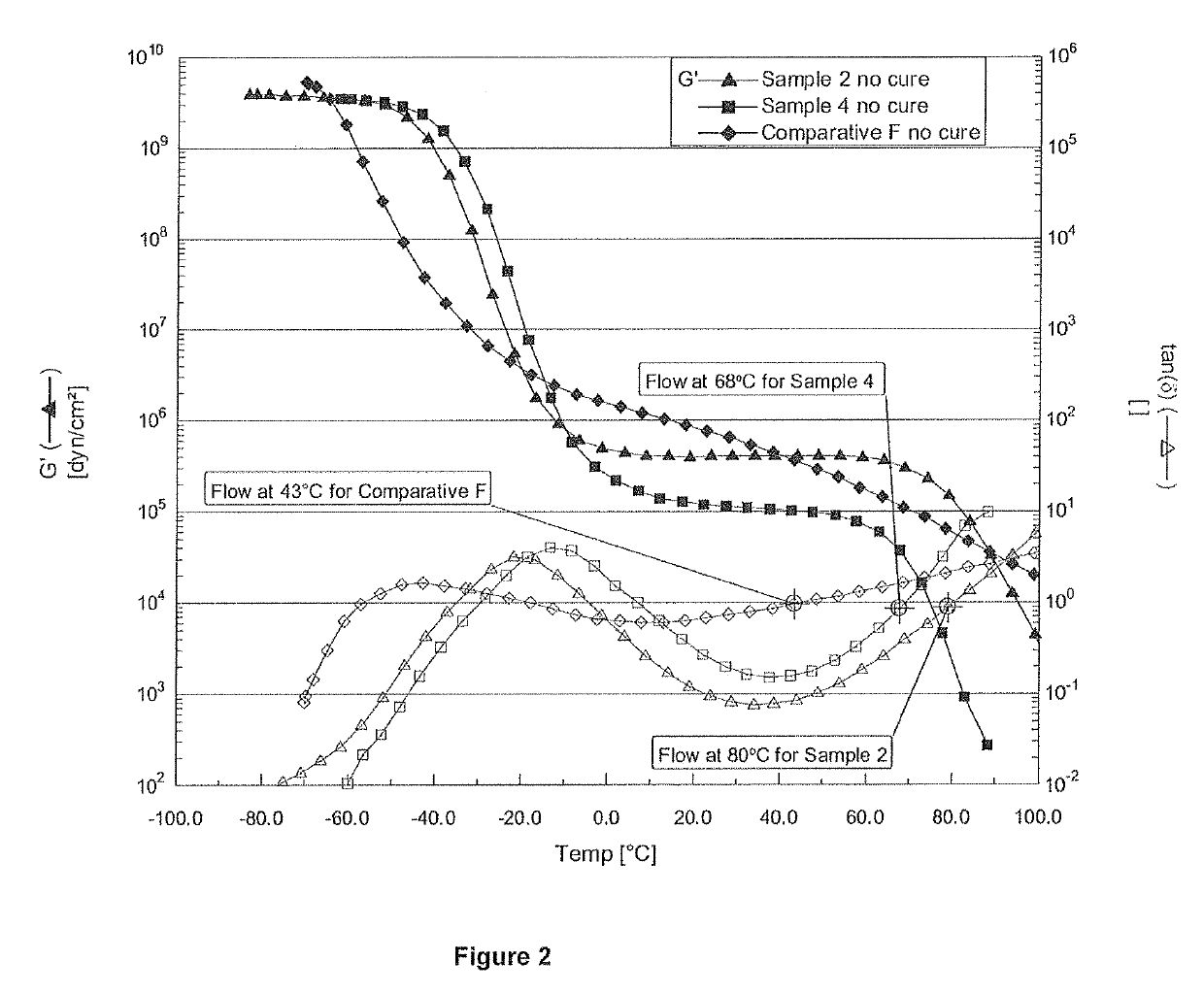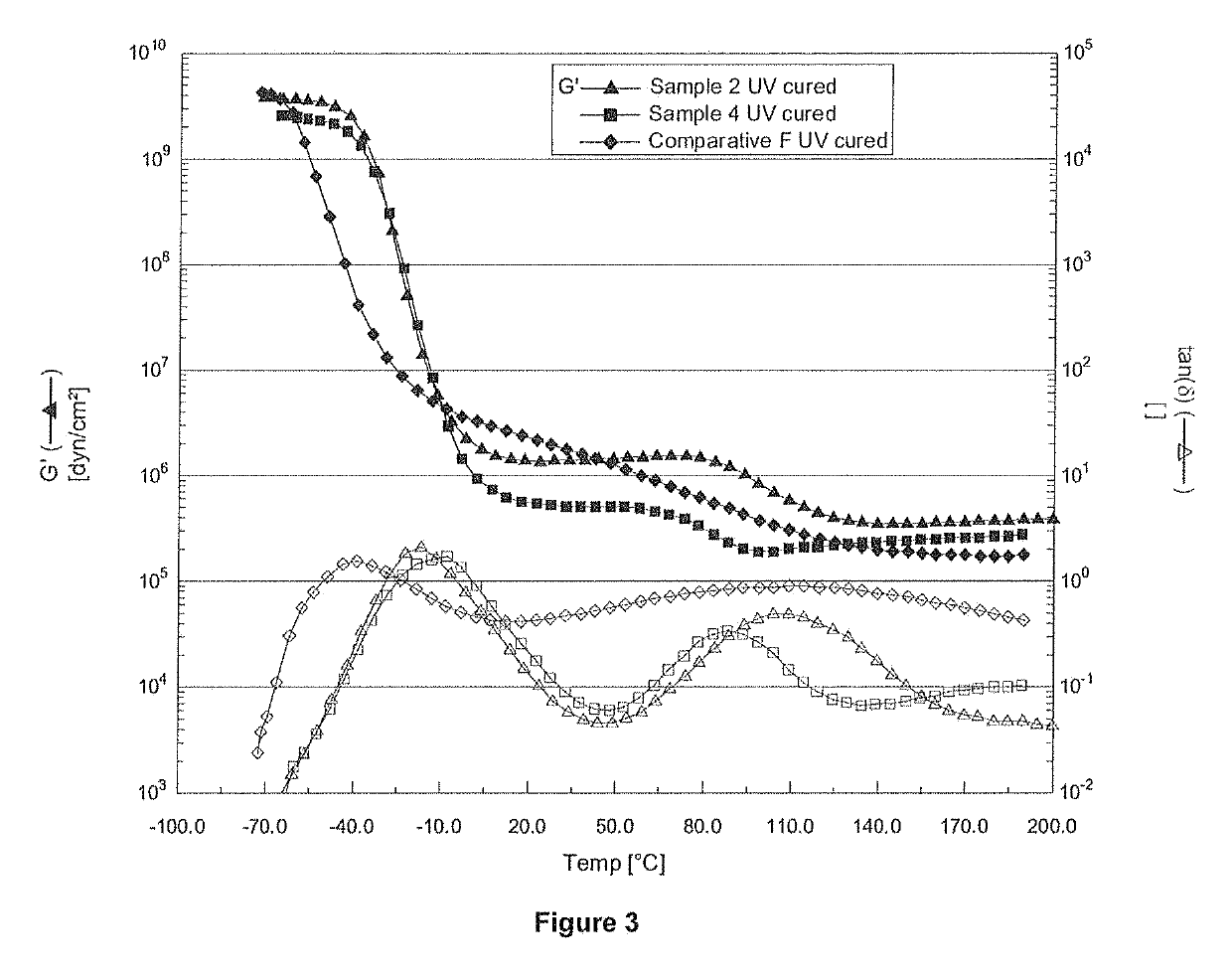Optically clear hot melt adhesives and uses thereof
a technology adhesives, applied in the field of hot melt adhesives, can solve the problems of poor void filling during assembly process, increasing the likelihood of void formation, poor wetness of substrates, etc., and achieve the effect of enhancing light transmission and optical effects
- Summary
- Abstract
- Description
- Claims
- Application Information
AI Technical Summary
Benefits of technology
Problems solved by technology
Method used
Image
Examples
examples
[0086]The invention will be described further in the following examples, which are included for purposes of illustration and are not intended, in any way, to be limiting of the scope of the invention. In the examples which follow, unless otherwise specified, all parts are by weight and all temperatures in degree Celsius. All viscosities were measured using a Brookfield viscometer with a #27 spindle.
[0087]A Rheometrics Dynamic Mechanical Analyzer (Model RDA 700) was used to obtain the elastic moduli (G′), loss modulus (G″) and tan delta versus temperature sweep. The instrument was controlled by Rhios software version 4.3.2. Parallel plates 8 mm in diameter and separated by a gap of about 2 mm were used. The sample was loaded and then cooled to about −100° C. and the time program started. The program test increased the temperature at 5° C. intervals followed by a soak time at each temperature of 10 seconds. The convection oven was flushed continuously with nitrogen. The frequency was ...
example 1-4
, Comparative E
[0109]Examples 1-4 and Comparative E-F are listed in Table 3. Comparative Examples E-F corresponds to adhesives described in WO 2013165637. All samples were prepared by mixing the components at 130° C. in a Glas-Col, as known to those of skill in the art. The properties of the examples are shown in Table 4. Samples 1-4 and E-F have viscosities that can be coated below 130° C. Sample 2 and 4 have flow temperatures at 80° C. and 68° C. respectively, as shown in Table 4 and FIG. 2, which are suitable for low lamination temperature for both organic photovoltaic module and LCD / LED display assembly processes. The UV cured adhesive films all showed significant increase of elastic modulus (G′) at 25° C. and 100° C. after cure and over the uncured films at the same temperatures. The lack of a flow temperature for Samples 2, 4, and F after cure, as shown in FIG. 3, is indicative of formation of crosslinked network, which provides good creep resistance. Samples 1-4 also showed d...
PUM
| Property | Measurement | Unit |
|---|---|---|
| elongation at break | aaaaa | aaaaa |
| elongation at break | aaaaa | aaaaa |
| shrinkage | aaaaa | aaaaa |
Abstract
Description
Claims
Application Information
 Login to View More
Login to View More - R&D
- Intellectual Property
- Life Sciences
- Materials
- Tech Scout
- Unparalleled Data Quality
- Higher Quality Content
- 60% Fewer Hallucinations
Browse by: Latest US Patents, China's latest patents, Technical Efficacy Thesaurus, Application Domain, Technology Topic, Popular Technical Reports.
© 2025 PatSnap. All rights reserved.Legal|Privacy policy|Modern Slavery Act Transparency Statement|Sitemap|About US| Contact US: help@patsnap.com



